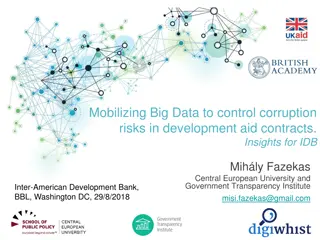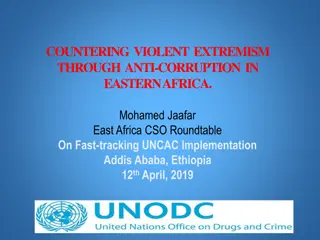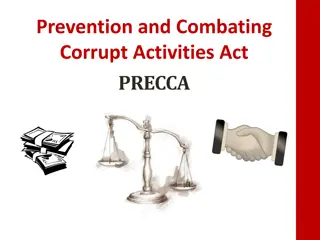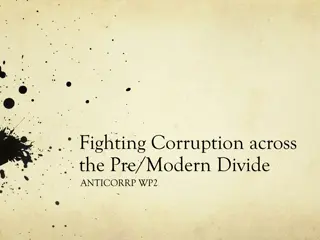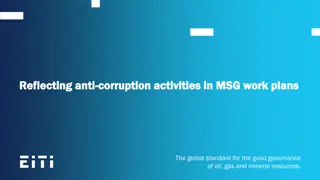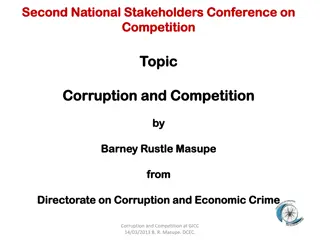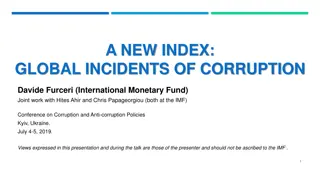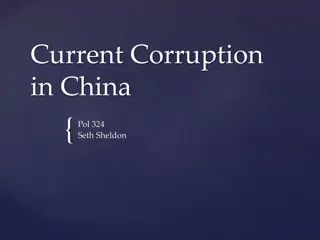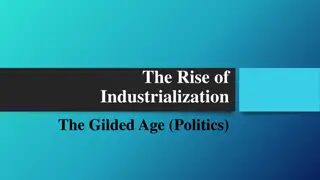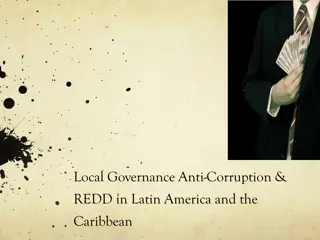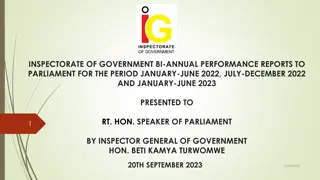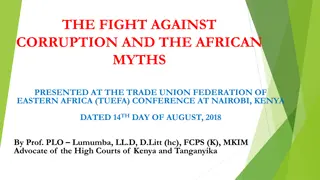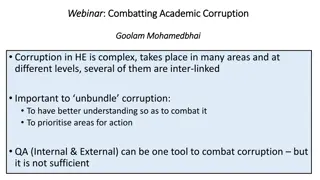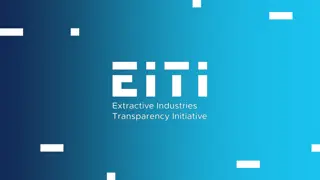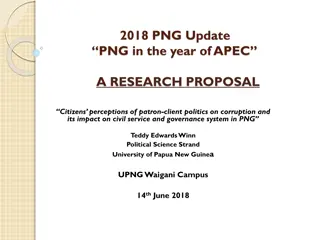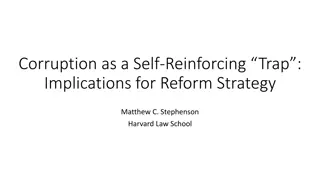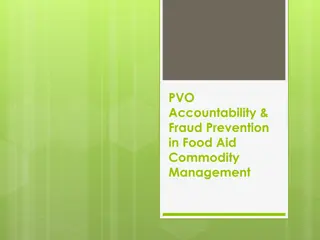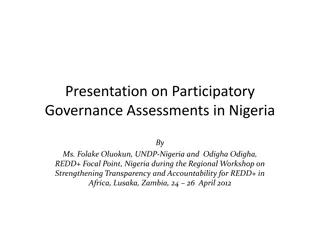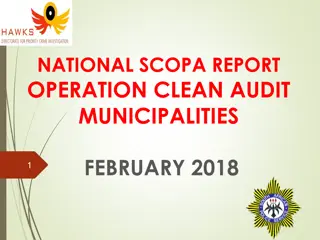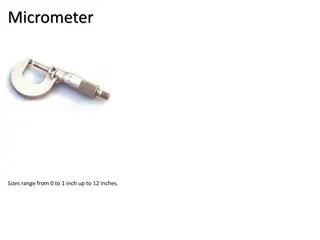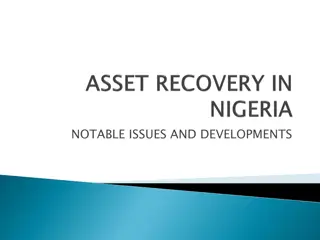Challenges in Measuring Corruption: Tools, Methodologies, and Solutions
The dilemma of measuring corruption lies in the diverse definitions, perceptions, and manifestations across societies. This article discusses the value of measuring corruption, the existing tools and methodologies, their limitations, and the need for more customized and credible indicators. It also explores the variances in corruption indices for different countries like China, Thailand, and India. The quest for actionable data and the importance of pro-poor, gender-sensitive indicators are highlighted.
Download Presentation

Please find below an Image/Link to download the presentation.
The content on the website is provided AS IS for your information and personal use only. It may not be sold, licensed, or shared on other websites without obtaining consent from the author. Download presentation by click this link. If you encounter any issues during the download, it is possible that the publisher has removed the file from their server.
E N D
Presentation Transcript
Lusaka, Zambia April 2012
The Dilemma of Measuring Corruption How do you measure something which differ across societies in terms of its definition, perception, scope, manifestations and impact; but needed to be measured for evidence-based policy making? Not everything that counts can be counted, and not everything that can be counted counts. What gets measured, get managed
Whats the value addition of measuring corruption? We need actionable data to guide decisions To give corruption a face To quantify and qualify corruption To inform reforms To direct policy To monitor prevalence & costs of corruption To monitor and evaluate anti-corruption interventions
Are there enough tools & methodologies? World Governance Assessment Global Accountability Report Gender Empowerment Measure Press Freedom GAPS in Workers Rights Global Integrity Index BEEPS East Asia Barometer Index of Economic Freedom Bribe Payers Index Opacity Index Commitment to Development CIRI Governance Matters Human Rights Database Global Eurobarometer Afrobarometer Competitiveness Index Polity Bertelsmann Transformation Index Media Sustainability Index CPIA (WB ) International Country Risk Guide Corruption Perception Index Journalists killed Freedom in the World Open Budget Index 1974 76 78 80 82 84 86 88 90 92 94 96 98 00 02 04 06
Whats the problem with the tools and methodologies, then? Comparison problem: Almost all tools/methodologies not suitable for cross-country comparison ( see next slide) 1. Practitioners want actionable data, and existing global indicators are inadequate 2. Perception-based data are too vague to be useful for policy reform (although frequently used as advocacy tools) 3. Different tools seems to be assessing the different concepts 4. Many tools are not customized to country specificities and thus are not useful and not seen as more credible by policymakers 5. Lack of pro-poor, gender sensitive indicators 6.
What is each index measuring, and what data sources are used? Corruption indices for China: Variations in rankings 3 2 China Thailand India 1 0 World Bank - Control of Corruption Transparency International - CPI Global Integrity Index Corruption in public sector as perceived by experts Existence, effectiveness and citizen access to anti- corruption mechanisms, assessed by national experts Corruption in public & private sector (+ some indicators at household level) as perceived by experts + opinion polls (incl. NGO experts)
Whats UNDP Position on measuring corruption then? UNDP doesn t prescribe any one methodologies, but provides guidance on their use, because: No methodology is perfect and thus standard All have advantages and disadvantages Depends on the purpose of the measurement UNDP s focus is on country-based and nationally owned corruption measurement and assessment: Results from a country-led assessments could feed into policy- making processes (e.g., reforms) Nationally-owned process help develop national capacity on measurement and assessment The assessment/measurement should engage multi- stakeholders at the country level
What kind of support is available from UNDP? UNDP Oslo Governance Centre: Provides support (both advisory and financial) for nationally owned assessments UNDP Global Programme on Anti- Corruption for Development Effectiveness: Has reviewed the tools, methodologies and good practices on anti-corruption in sectors Will provide support to AC agencies to conduct Integrity assessment .
Participatory Governance Assessments for REDD+ (PGAs) A PGA is a participatory approach to develop governance data The PGA for REDD+ will contribute to the development of national systems providing relevant information on how safeguards are promoted, addressed and respected as recommended in the Cancun Agreement In 2011, four PGAs launched in Indonesia, Vietnam, Ecuador and Nigeria Anti-corruption strategy for REDD+, one of the thematic focus areas
Lessons: Know what you want to measure or benchmark, and find the appropriate measurement tool Look for actionable data Disaggregated indicators are one of the more effective methods to operationalize corruption data. Consider using existing data sources to construct Indicators Whenever possible, combine quantitative data with qualitative assessments Gravitate toward locally generated assessments Transparency of methodology is crucial


